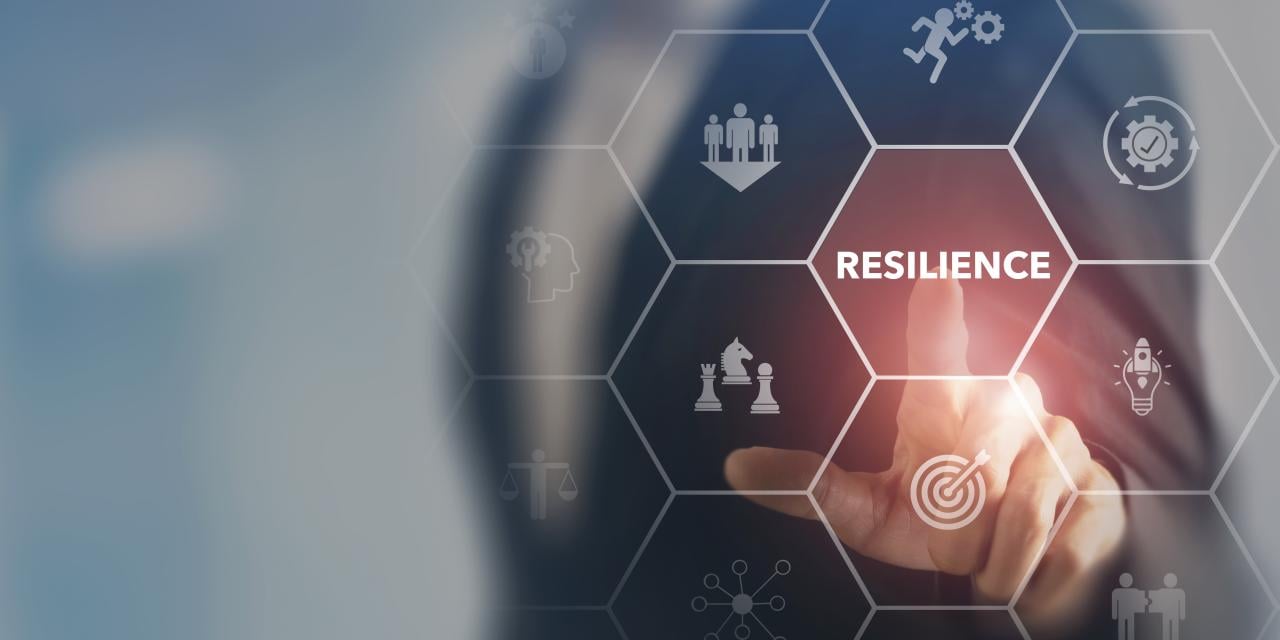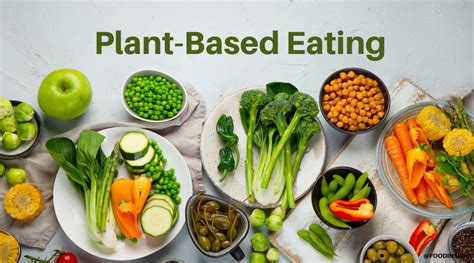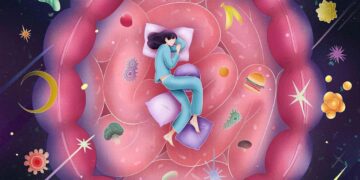In the ceaseless currents of modern life, stress has become an omnipresent force. While some stress is inevitable, even beneficial, chronic or overwhelming stress can silently erode our physical health, mental well-being, and overall quality of life. The true secret to thriving in a high-pressure world isn’t to eliminate stress entirely, but to cultivate resilience – the remarkable capacity to bounce back, adapt, and even grow stronger in the face of adversity. This comprehensive article delves into the dynamic realm of modern stress management, exploring its core principles, diverse methodologies, and the cutting-edge strategies that are continuously reshaping how we safeguard our minds and bodies. We’ll uncover how a strategic blend of physiological regulation, cognitive reframing, lifestyle optimization, and technological integration can transform vulnerability into fortitude, ensuring greater peace of mind and fostering sustained vitality in mid-2025 and beyond.
The Science of Stress and Resilience

To effectively build stress resilience, we must first understand the physiological and psychological mechanisms of stress and how the body responds. Resilience isn’t merely willpower; it’s a trainable capacity rooted in our biology.
A. The Stress Response: Fight, Flight, or Freeze:
* Description: When faced with a perceived threat (a stressful situation), our body activates the “fight, flight, or freeze” response, mediated primarily by the sympathetic nervous system and the hypothalamic-pituitary-adrenal (HPA) axis. This floods the body with hormones like cortisol and adrenaline, leading to increased heart rate, elevated blood pressure, heightened alertness, and diverted energy from non-essential functions (like digestion and immune response). While adaptive for acute threats, chronic activation of this response is detrimental.
* Impact: Understanding this fundamental physiological response is crucial because prolonged activation of the stress response can lead to chronic inflammation, weakened immune function, cardiovascular problems, digestive issues, and mental health challenges like anxiety and depression. Building resilience involves learning to consciously modulate and “turn off” this response when the threat is no longer present, allowing the body to return to a state of calm and repair. This is where the ability to self-regulate physiological states becomes paramount.
B. Allostatic Load: The Cost of Chronic Stress:
* Description: Allostatic load refers to the “wear and tear” on the body caused by chronic or repeated stress. It’s the cumulative burden that results from the body constantly having to adapt to stressors. High allostatic load is associated with increased risk of chronic diseases, accelerated aging, and impaired cognitive function. It’s not just the stressor itself, but the body’s prolonged effort to adapt that causes damage.
* Impact: Recognizing allostatic load shifts the focus from avoiding individual stressors to managing the overall physiological response to stress. Resilience strategies aim to reduce this load by improving the body’s ability to recover and adapt efficiently, thereby preventing the long-term, systemic damage associated with chronic stress. This concept highlights why a holistic approach to stress management is vital, as it impacts nearly every bodily system.
C. Neuroplasticity and Stress Adaptation:
* Description: The brain is highly adaptable, a phenomenon known as neuroplasticity. Chronic stress can negatively alter brain structures (e.g., shrinking the hippocampus, which is involved in memory and emotion), while resilience-building practices (like mindfulness and exercise) can promote positive structural and functional changes, making the brain more adept at handling stress.
* Impact: Understanding neuroplasticity provides the biological basis for why resilience can be trained. It means that through consistent practice of stress management techniques, individuals can rewire their brains to respond more effectively to stressors, becoming less reactive and more adaptable. This offers hope and a scientific foundation for the efficacy of various psychological and behavioral interventions aimed at enhancing resilience.
D. Heart Rate Variability (HRV): A Biomarker of Resilience:
* Description: Heart Rate Variability (HRV) measures the variation in time between heartbeats. A higher HRV generally indicates greater autonomic nervous system flexibility and a stronger ability to shift between the “fight or flight” (sympathetic) and “rest and digest” (parasympathetic) states, signifying higher resilience. Low HRV is associated with chronic stress and poor health.
* Impact: HRV is a powerful, non-invasive biomarker that can be tracked with wearables and used to objectively monitor stress levels, recovery status, and the effectiveness of resilience-building practices. By providing real-time feedback, it empowers individuals to understand their physiological state and adjust their lifestyle accordingly, making resilience a measurable and trainable physiological capacity.
Understanding these scientific underpinnings transforms stress management from abstract advice into a concrete, data-informed pursuit of physiological and psychological adaptability.
Core Strategies for Building Stress Resilience
Building stress resilience is a proactive, multifaceted endeavor that integrates physical, mental, and emotional practices. These core strategies form the foundation for lasting fortitude.
A. Mindfulness and Meditation: Cultivating Presence:
* Description: Mindfulness involves paying attention to the present moment, without judgment, while meditation refers to practices that train attention and awareness. Techniques include focused breathing, body scans, guided visualization, and loving-kindness meditation. These practices train the mind to observe thoughts and feelings without being overwhelmed by them, fostering a sense of calm and perspective.
* Impact: Regular mindfulness and meditation reduce the physiological stress response (lowering cortisol, increasing HRV), improve emotional regulation, enhance cognitive flexibility, and promote a sense of inner peace. They help individuals to respond to stressors consciously rather than reactively, creating a mental buffer between stimulus and response, thereby building a stronger capacity to remain calm under pressure.
B. Regular Physical Activity: Movement as a Stress Reliever:
* Description: Consistent engagement in a varied exercise regimen, including aerobic activity (e.g., running, swimming), strength training, yoga, and stretching. The key is moderate intensity and regularity, not necessarily extreme workouts.
* Impact: Exercise is a powerful stress buffer. It reduces stress hormones, stimulates the production of mood-boosting neurotransmitters (endorphins, serotonin), improves sleep quality, and provides a healthy outlet for pent-up energy and tension. It also enhances cardiovascular health and overall physical resilience, making the body more capable of handling physiological stress. Regular movement physically “burns off” stress, contributing to mental clarity and emotional stability.
C. Optimized Sleep: The Ultimate Recovery Tool:
* Description: Prioritizing 7-9 hours of consistent, high-quality, uninterrupted sleep nightly. This involves establishing a regular sleep schedule, optimizing the sleep environment (dark, cool, quiet), and practicing good sleep hygiene (avoiding screens before bed, limiting caffeine/alcohol, consistent winding down routine).
* Impact: Sleep is where the body and brain perform crucial repair, consolidate memories, and regulate hormones. Chronic sleep deprivation significantly amplifies stress, impairs cognitive function, weakens the immune system, and contributes to emotional dysregulation. Optimized sleep is fundamental for physical and mental recovery, directly enhancing the body’s ability to cope with daily stressors and build long-term resilience.
D. Precision Nutrition: Fueling Stress Resilience:
* Description: Focusing on a diet rich in whole, unprocessed foods, including fruits, vegetables, lean proteins, healthy fats (e.g., omega-3s), and complex carbohydrates. Minimizing processed foods, excessive sugar, unhealthy fats, and caffeine/alcohol, which can exacerbate stress responses or impair sleep. Hydration is also paramount.
* Impact: Provides the essential nutrients for neurotransmitter production, hormone balance, and reducing inflammation (a key component of chronic stress). Proper fueling supports stable blood sugar levels, preventing energy crashes that contribute to irritability and fatigue. A well-nourished body is better equipped to manage the physiological demands of stress, contributing to sustained energy and mental clarity.
These core strategies, when consistently practiced, work synergistically to build a robust foundation for enduring stress resilience.
Advanced Techniques for Elevating Resilience

Beyond the foundational strategies, several advanced techniques leverage deeper physiological and psychological insights to further refine and elevate one’s capacity for stress resilience.
A. Heart Rate Variability (HRV) Biofeedback and Training:
* Description: Using wearable devices or dedicated sensors that measure HRV, often paired with apps that provide real-time visual or auditory feedback. Individuals learn to intentionally alter their breathing patterns or mental state to increase their HRV, signaling greater autonomic nervous system balance.
* Impact: Provides an objective, real-time measure of physiological resilience. By actively training to increase HRV, individuals can directly improve their body’s ability to shift from a stressed state to a relaxed state, enhancing their capacity for recovery, emotional regulation, and overall stress adaptability, making resilience a measurable and trainable skill.
B. Neurofeedback and Brainwave Optimization:
* Description: A technique using sensors to monitor brainwave activity (e.g., alpha, beta, theta waves) and providing real-time feedback (visual or auditory) to the individual. Through this feedback, individuals learn to consciously alter their brainwave patterns to achieve desired states, such as increased focus, reduced anxiety, or deeper relaxation.
* Impact: Directly trains the brain to regulate its own activity, promoting states conducive to calm and cognitive performance. It can be highly effective for managing chronic anxiety, improving attention, and enhancing emotional resilience by strengthening neural pathways associated with desired brain states, offering a powerful tool for self-regulation at a neurological level.
C. Cold Exposure Therapy (Cryotherapy, Cold Showers):
* Description: Deliberately exposing the body to cold temperatures through practices like cold showers, ice baths, or whole-body cryotherapy. Often combined with specific breathing techniques (e.g., Wim Hof Method).
* Impact: Activates the sympathetic nervous system in a controlled manner, followed by a robust parasympathetic rebound, training the body’s stress response and improving resilience to future stressors. It can reduce inflammation, boost mood (due to endorphin release), improve circulation, and enhance mental fortitude and focus by pushing comfort zones, effectively “toughening” the body’s stress response system.
D. Adaptogens and Targeted Supplementation:
* Description: Strategic use of adaptogenic herbs (e.g., Ashwagandha, Rhodiola Rosea, Ginseng) and targeted supplements (e.g., magnesium, Omega-3 fatty acids, B vitamins) that are believed to help the body adapt to stress, promote balance, and support nervous system function. Always with professional guidance.
* Impact: Can support the body’s natural stress response mechanisms, potentially reducing the physiological impact of chronic stress, improving energy levels, and enhancing mood. Adaptogens help the body maintain homeostasis under stress, providing biochemical support for resilience, though individual responses can vary.
These advanced techniques offer deeper, more targeted pathways to enhance stress resilience, often working at physiological and neurological levels to build enduring fortitude.
Technology’s Role in Modern Stress Resilience
Technology is rapidly becoming an indispensable ally in the quest for stress resilience, offering unprecedented tools for monitoring, intervention, and personalized support.
A. Wearable Biometric Devices for Real-time Monitoring:
* Description: Smartwatches, rings (e.g., Oura Ring, WHOOP), and fitness trackers that continuously monitor Heart Rate Variability (HRV), sleep quality, skin temperature, stress levels, and activity. They provide daily readiness scores and insights.
* Impact: Offer objective, real-time data on physiological stress and recovery, empowering individuals to understand their body’s signals and make informed decisions about rest, activity, and stress management. They turn subjective feelings into actionable insights, making resilience a data-driven pursuit and helping to prevent burnout by highlighting when rest is truly needed.
B. Mindfulness and Meditation Apps:
* Description: Mobile applications (e.g., Calm, Headspace, Insight Timer) offering guided meditations, breathing exercises, sleep stories, and soundscapes. Many track progress and offer personalized content based on user goals.
* Impact: Make mindfulness and meditation accessible to millions, providing structured guidance for cultivating presence, reducing anxiety, and improving emotional regulation. They facilitate consistent practice, turning abstract concepts into manageable daily routines that enhance mental resilience and overall well-being.
C. Biofeedback and Neurofeedback Devices:
* Description: Specialized devices (often consumer-grade, such as Muse EEG headband or dedicated HRV sensors) that measure physiological responses (brainwaves, heart rate) and provide real-time feedback (visual, auditory). Users learn to consciously regulate these responses.
* Impact: Empowers individuals to gain conscious control over their autonomic nervous system and brain activity, directly training relaxation responses, focus, and emotional regulation. This technology provides a powerful feedback loop for developing self-mastery over physiological stress responses, leading to profound improvements in resilience.
D. AI-Powered Mental Wellness Platforms:
* Description: Digital platforms leveraging AI for personalized mental health support, offering cognitive behavioral therapy (CBT) exercises, mood tracking, guided journaling prompts, and even AI chatbots for supportive conversations, often escalating to human therapists when appropriate.
* Impact: Increases accessibility to mental wellness resources, provides personalized interventions, and offers a discreet way to manage stress, anxiety, and mild depression. AI can learn from user input to provide highly tailored support, democratizing access to psychological tools for resilience building.
Technology, when used intentionally, transforms stress resilience from an abstract concept into a measurable, trainable, and deeply personalized journey towards enhanced well-being.
The Societal Impact of Widespread Stress Resilience
A society with high collective stress resilience is more than just a collection of calm individuals; it’s a more productive, adaptable, and compassionate community, capable of navigating global challenges with greater fortitude.
A. Enhanced Public Health and Reduced Healthcare Burden:
* Description: A population with higher stress resilience experiences lower rates of stress-related illnesses (cardiovascular disease, chronic inflammation, anxiety, depression). This leads to fewer hospital visits, reduced reliance on medication, and overall healthier citizens.
* Impact: Significantly alleviates the immense financial and operational burden on healthcare systems. It frees up resources, allows for more focus on preventive care, and leads to a healthier, more productive workforce. The societal cost of untreated chronic stress is immense, and building resilience directly mitigates this.
B. Increased Productivity and Economic Stability:
* Description: Resilient individuals are more focused, less prone to burnout, and more adaptable to workplace changes. This translates to higher productivity, lower absenteeism, and greater innovation within companies and industries.
* Impact: Fosters a more dynamic and stable economy. A resilient workforce is better equipped to handle economic downturns, technological shifts, and market volatility, leading to greater business continuity and sustained economic growth. It improves employee well-being and reduces the societal costs associated with stress-related productivity losses.
C. Stronger Community Cohesion and Social Capital:
* Description: Individuals with strong stress resilience are generally better able to manage conflicts, engage in constructive dialogue, and contribute positively to their communities. This fosters empathy, cooperation, and collective problem-solving.
* Impact: Builds stronger, more supportive communities with higher social capital – the networks of relationships that enable a society to function effectively. Resilient communities are better able to respond to crises (natural disasters, economic shocks) and address social issues collaboratively, leading to greater collective well-being and a more harmonious social fabric.
D. Improved Crisis Management and Adaptability:
* Description: Societies with high collective resilience are better prepared to respond to large-scale crises (pandemics, natural disasters, geopolitical tensions). Citizens are more likely to follow guidelines, adapt to new realities, and support collective efforts.
* Impact: Enables faster recovery from national or global shocks, minimizes panic and social fragmentation, and facilitates more effective implementation of emergency measures. A resilient populace is a key asset in national and global crisis management, allowing for effective adaptation and a quicker return to normalcy.
The widespread cultivation of stress resilience thus creates a powerful virtuous cycle, leading to a more robust, compassionate, and thriving global society.
Conclusion
In mid-2025, amidst the relentless currents of modern life, the ability to cultivate stress resilience stands out not as a mere coping mechanism, but as an indispensable superpower for navigating complexity and achieving sustained well-being. It’s about building an unbreakable inner core – a remarkable capacity to not only withstand adversity but to emerge stronger, more adaptable, and more vibrant from every challenge. This isn’t an innate trait; it’s a trainable skill, meticulously honed through a strategic blend of scientific understanding and consistent practice.
The genius of modern stress resilience strategies lies in their holistic approach, integrating the profound insights from neuroscience and physiology with actionable lifestyle changes. From the foundational pillars of mindfulness, optimized sleep, precision nutrition, and regular physical activity, to advanced techniques like HRV biofeedback and cold exposure therapy, every component works synergistically to regulate our stress response and enhance our innate capacity for recovery. Technology further empowers this journey, offering real-time insights through wearables, personalized guidance through apps, and automated support to make consistent practice accessible to everyone.
However, the path to mastery requires commitment and awareness. It demands a proactive stance against the insidious effects of chronic stress, a willingness to understand our own unique triggers, and the discipline to implement daily habits that reinforce our resilience. Ultimately, investing in these stress resilience strategies is an investment in your physical health, mental clarity, emotional fortitude, and overall quality of life. It’s the essential blueprint for not just surviving, but truly thriving in an unpredictable world, allowing you to face any challenge with calm, strength, and an unwavering spirit. Master your mind, master your life.












